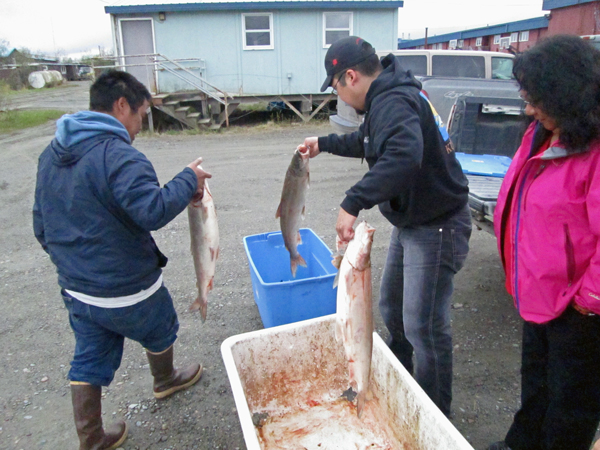
The Bethel Test Fishery put nets in the water five days early this year. With no salmon fishing happening in the early season, the test data will be central to understanding the strength of the king run and helping managers decide when to open up for other species.
In its 30 years of operation, the Bethel Test Fishery has begun drifting June 1st. This year, crews started May 27th. Kevin Schaberg is a Research Biologist with the Alaska Department of Fish and Game.
“Breakup was pretty early this year and reports from around state and on the Kuskokwim was that the fish were coming in a little bit early here and there,” said Shaberg.
Crews have caught both king and sockeye salmon in the first couple days of operations. Given this year’s severe king salmon restrictions, Shaberg is expecting many more king salmon to come through the test waters relative to typical years when people have been fishing below Bethel.
“This year everybody knows is a very different year… this is something I don’t know if we’ve ever seen on the Kuskowkim river in terms of lack of harvest at this time of year. So interpretation of Bethel Test Fishery is going to take a little bit longer to get a really solid signal on whether we think the run is doing well or very well or very poor,” said Shaberg.
Schaberg says there is no perfect way to measure the impact of people not catching kings. There is however an anticipated cultural and social harvest of about 1,000 kings beginning in June on federal waters. There are detailed reporting requirements about where and when the kings were caught. That will add some data to the managers’ toolbox.
Knowing the species mix from Bethel Test Fishery and how the kings are moving upriver is critical for the mid part of June when managers plan to open a dipnet fishery for other species of salmon and the last week of June, when they hope to have short gillnet openings.
On Thursday morning, representatives from Bethel’s Tribe, ONC picked up a small tote box of test fishery kings salmon bound for elder meals at Bethel’s senior center. The tribe is helping distribute those fish during the summer. Shaberg says it’s good to get the catch out to people on the river, and adds that about a quarter of the catch actually survives.
“We count those fish, we record it as a captured fish. But if it looks like a healthy fish, we put it back in the water. We don’t want to kill fish if we don’t need to kill fish,” said Shaberg.
Other research initiatives this summer include lower river fisherman collecting scales to estimate age and sex composition. And in early July, a Yukon River Sonar crew will come to evaluate sites for a possible sonar project.
Ben Matheson is a contributor with the Alaska Public Radio Network.




